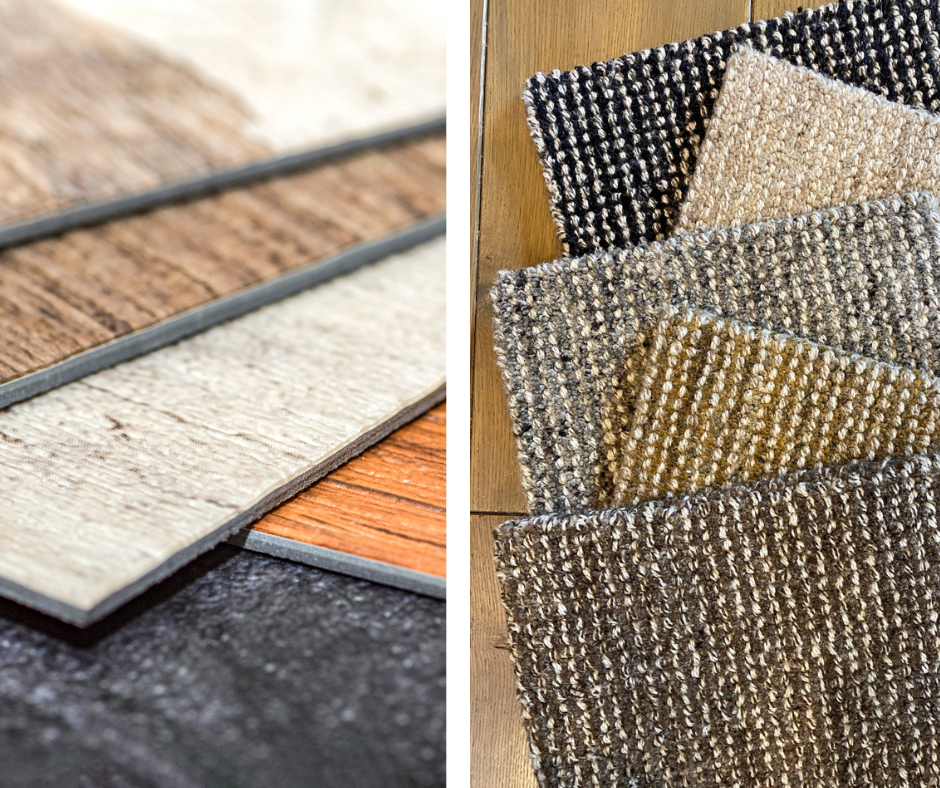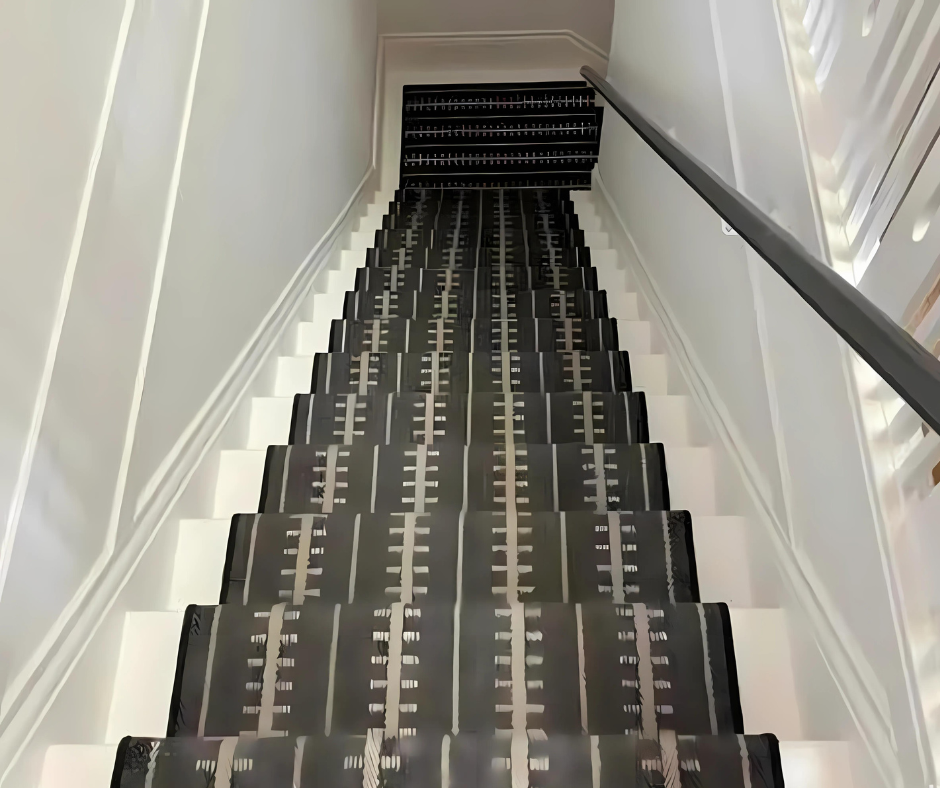When deciding between a plastic runner vs carpet runner for stair treads, it’s important to consider how each can enhance your home’s look and feel.
Carpet stair landings and treads are a cozy and stylish option, that can instantly bring luxury and elegance to your staircase.
Plastic runners, on the other hand, are practical for busy areas, but may not be as stylish as carpet.
Both choices provide safety and protect your stairs from wear.
Which is More Durable: Plastic or Carpet Runner for Stairs?
Plastic stair runners are known for their durability, particularly in homes with pets or heavy foot traffic.
They resist spills and scratches, making them ideal for high-use areas.
Carpet runners, especially those made from tough materials like nylon, offer long-lasting protection while giving your stairs a softer, more luxurious feel.
For homes with white stairs, a carpet stair tread runner can keep the space looking fresh and stylish while protecting the wood.
Carpet runners not only absorb noise but also add warmth, making them perfect for homeowners looking for comfort and design.
How Do Plastic and Carpet Runners Impact Safety?
Both plastic and carpet stair runners improve safety, but in different ways.
Plastic runners often come with anti-slip surfaces, making them good for preventing falls, especially in homes with children or elderly family members.
However, carpet runners provide more traction naturally, giving you a safer, cushioned surface for every step.
Carpet stair treads are particularly useful for adding grip to hard, slick surfaces like wooden or tiled stairs.
For those with white stairs, a carpet runner not only provides safety but also adds a stylish contrast, turning the staircase into a focal point of the home.
Which is Easier to Clean and Maintain: Plastic or Carpet Stair Runners?
Plastic stair runners are the easiest to maintain—you can wipe them clean in seconds, which is great for families on the go.
They also resist staining, making them a great option for high-traffic staircases.
Carpet runners, while a bit more demanding, are still fairly easy to care for, especially if made from modern stain-resistant materials like nylon.
Regular vacuuming keeps them looking sharp, and deep cleaning can refresh them when needed.
For white stairs, a carpet stair tread runner will require a bit more upkeep to keep it looking pristine, but it’s a small price to pay for the elegance and comfort it brings to the space.
What Design Options Are Available for Plastic vs Carpet Stair Runners?
When it comes to design, carpet runners offer more variety.
You can choose from a wide array of colors, patterns, and textures to match your home’s style.
Whether you prefer a bold pattern or a classic neutral, there’s a carpet runner that can elevate the look of your staircase.
Plastic runners, while more functional, come in fewer design options, often favoring clear or neutral tones that blend into the background.
For those with white stairs, a carpet stair tread runner offers an opportunity to play with contrast, adding a touch of style while keeping your stairs safe and comfortable.
Steps to Success
In the end, choosing between a plastic runner and a carpet runner for stair treads depends on your lifestyle and design goals.
If low maintenance and practicality are key, a plastic runner may suit your needs.
However, if you want to add warmth, safety, and style to your staircase—especially if you have white stairs—a carpet stair tread runner is the perfect choice.
Both options can protect your stairs and keep your home looking its best for years to come.




